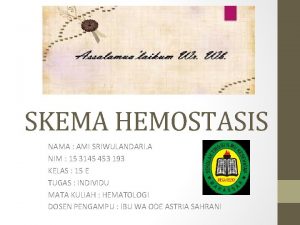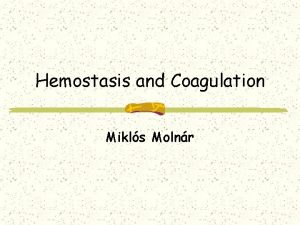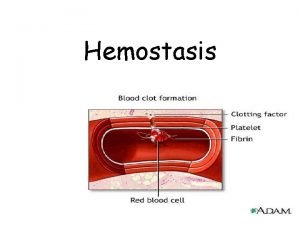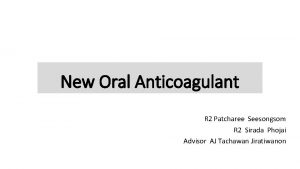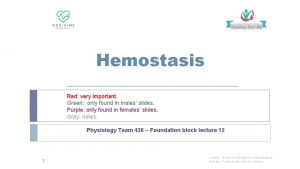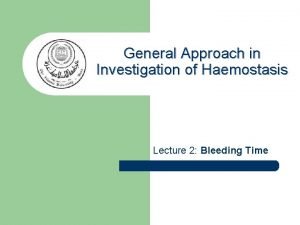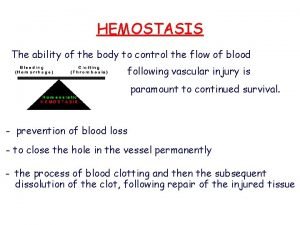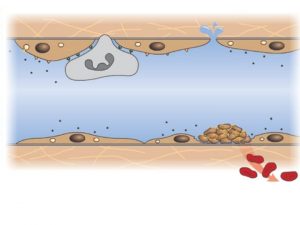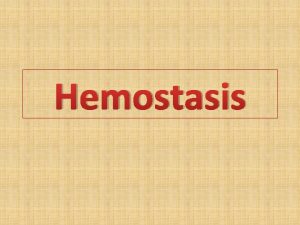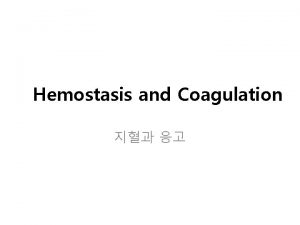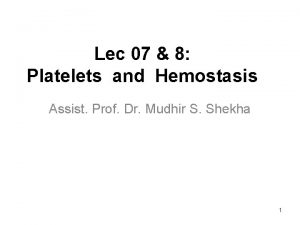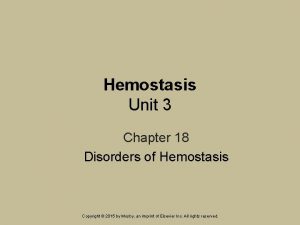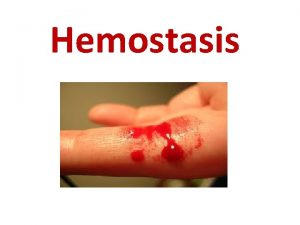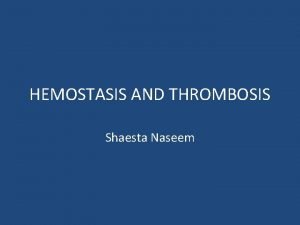Hemostasis Assist Prof Luay A Naeem Hemostasis The












- Slides: 12

Hemostasis Assist Prof. Luay A. Naeem

Hemostasis The arrest of bleeding, either by the natural processes of vasoconstriction and coagulation or by surgical means. Hemostasis is a complex process that involves platelet activation and circulating clotting factors which stop bleeding.

Hemostasis entails three mechanisms A. Vascular spasm B. Platelet plug formation C. Blood clotting (coagulation)

Hemostasis There are three factors involved in the spontaneously arrest of bleeding: 1. Extravascular: It is primary concerned with location of the vessel. 2. Vascular. 3. Intravascular: blood clot factors become activate.

Mechanical arrest of hemorrhage 1. By applying pressure to the bleeding points with gauze sponges. Once a thrombus has formed, the sponge should be gently removed to prevent disrupting clots. 2. End of B. V. may be crushed with a hemostatic forceps 3. Torsion after crushing twisting the vessel before releasing forceps

4. Ligation: this involves tying the end of a blood vessel to prevent further escape of blood. Double ligatures are recommended for larger vessels, particularly arteries. Transfixation ligatures may be indicated for larger vessels to prevent the ligature from slipping off the vessel end. Using the smallest suture possible for vessel ligation improves knot security. 5. Suturing: Is used primarily to appose wound edge

6. Tourniquet: Applying compression with constricting band. It should be short time and never when other means of hemostasis are avaliable. 7. Hemostasis with topically applied substance: Astringent effect on tissue and BV. They are applied topically to small cuts and abrasions Ex. Glacal acetic acid, silver nitrite, ferric sulfate, and alum.

8. Electrosurgery and electrocoagulat: ion: intensive heat burns tissue and the coagulated tissues act as a plug. A highfrequency electric current is used to cut tissue and low voltage is used for coagulation. Electrocautery refers to direct current whereas electrosurgery uses alternating current. During electrocautery, current does not enter the patient's body. Only the heated wire comes in contact with tissue. In electrosurgery, the patient is included in the circuit and current enters the patient's body.

9. Specific coagulants: Gelfoam is sponge like substance which provides a large surface on which blood will clot. Bone wax can be used to arrest bleeding in bone or cartilage. 10. Systemic hemostasis agents: Substances administered systemically usually are beneficial only when they are deficient. Vitamine K is necessary formation of prothrombin.




